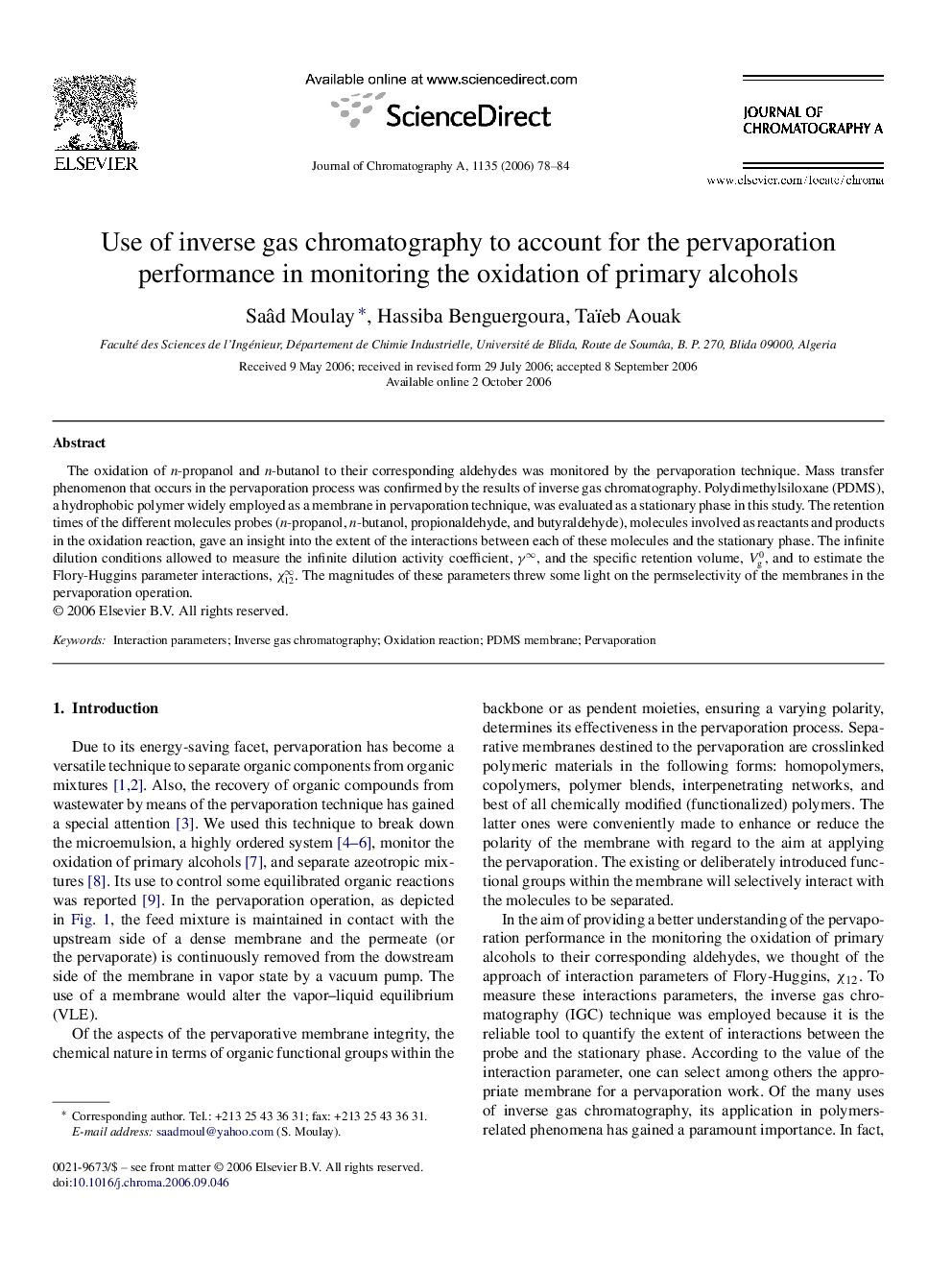| Article ID | Journal | Published Year | Pages | File Type |
|---|---|---|---|---|
| 1211283 | Journal of Chromatography A | 2006 | 7 Pages |
Abstract
The oxidation of n-propanol and n-butanol to their corresponding aldehydes was monitored by the pervaporation technique. Mass transfer phenomenon that occurs in the pervaporation process was confirmed by the results of inverse gas chromatography. Polydimethylsiloxane (PDMS), a hydrophobic polymer widely employed as a membrane in pervaporation technique, was evaluated as a stationary phase in this study. The retention times of the different molecules probes (n-propanol, n-butanol, propionaldehyde, and butyraldehyde), molecules involved as reactants and products in the oxidation reaction, gave an insight into the extent of the interactions between each of these molecules and the stationary phase. The infinite dilution conditions allowed to measure the infinite dilution activity coefficient, γâ, and the specific retention volume, Vg0, and to estimate the Flory-Huggins parameter interactions, Ï12â. The magnitudes of these parameters threw some light on the permselectivity of the membranes in the pervaporation operation.
Keywords
Related Topics
Physical Sciences and Engineering
Chemistry
Analytical Chemistry
Authors
Saâd Moulay, Hassiba Benguergoura, Taïeb Aouak,
